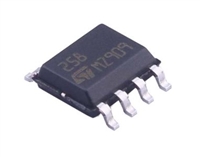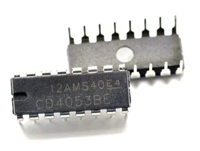Data Sheet
ADP151
ABSOLUTE MAXIMUM RATINGS
Table 3.
on PCB material, layout, and environmental conditions. The
specified values of θJA are based on a 4-layer, 4 in. × 3 in. circuit
board. See JESD51-7 and JESD51-9 for detailed information
on the board construction. For additional information, see the
AN-617 Application Note, MicroCSP™ Wafer Level Chip Scale
Package, available at www.analog.com.
Parameter
Rating
VIN to GND
VOUT to GND
−0.3 V to +6.5 V
−0.3 V to VIN
EN to GND
−0.3 V to +6.5V
−65°C to +150°C
−40°C to +125°C
−40°C to +125°C
JEDEC J-STD-020
Storage Temperature Range
Operating Junction Temperature Range
Operating Ambient Temperature Range
Soldering Conditions
ΨJB is the junction-to-board thermal characterization parameter
with units of °C/W. ΨJB of the package is based on modeling and
calculation using a 4-layer board. The JESD51-12, Guidelines for
Reporting and Using Electronic Package Thermal Information, states
that thermal characterization parameters are not the same as
thermal resistances. ΨJB measures the component power flowing
through multiple thermal paths rather than a single path as in
thermal resistance, θJB. Therefore, ΨJB thermal paths include
convection from the top of the package as well as radiation from
the package, factors that make ΨJB more useful in real-world
applications. Maximum junction temperature (TJ) is calculated
from the board temperature (TB) and power dissipation (PD)
using the formula
Stresses above those listed under absolute maximum ratings
may cause permanent damage to the device. This is a stress
rating only and functional operation of the device at these or
any other conditions above those indicated in the operational
section of this specification is not implied. Exposure to absolute
maximum rating conditions for extended periods may affect
device reliability.
THERMAL DATA
Absolute maximum ratings apply individually only, not in
combination. The ADP151 can be damaged when the junction
temperature limits are exceeded. Monitoring ambient temperature
does not guarantee that TJ is within the specified temperature
limits. In applications with high power dissipation and poor
thermal resistance, the maximum ambient temperature may
have to be derated.
TJ = TB + (PD × ΨJB)
See JESD51-8 and JESD51-12 for more detailed information
about ΨJB.
THERMAL RESISTANCE
θJA and ΨJB are specified for the worst-case conditions, that is, a
device soldered in a circuit board for surface-mount packages.
In applications with moderate power dissipation and low PCB
thermal resistance, the maximum ambient temperature can
exceed the maximum limit as long as the junction temperature
is within specification limits. The junction temperature (TJ) of
the device is dependent on the ambient temperature (TA), the
power dissipation of the device (PD), and the junction-to-ambient
thermal resistance of the package (θJA).
Table 4. Thermal Resistance
Package Type
θJA
ΨJB
43
58
Unit
°C/W
°C/W
°C/W
5-Lead TSOT
4-Ball, 0.4 mm Pitch WLCSP
6-Lead 2 mm × 2 mm LFCSP
170
260
63.6
28.3
The maximum junction temperature (TJ) is calculated from the
ambient temperature (TA) and power dissipation (PD) using the
formula
ESD CAUTION
TJ = TA + (PD × θJA)
The junction-to-ambient thermal resistance (θJA) of the package
is based on modeling and calculation using a 4-layer board. The
junction-to-ambient thermal resistance is highly dependent
on the application and board layout. In applications where high
maximum power dissipation exists, close attention to thermal
board design is required. The value of θJA may vary, depending
Rev. E | Page 5 of 24







 MAX6675资料手册参数详解、引脚配置说明
MAX6675资料手册参数详解、引脚配置说明

 LM258引脚图及功能介绍、主要参数分析
LM258引脚图及功能介绍、主要参数分析

 CD4052资料手册参数详解、引脚配置说明
CD4052资料手册参数详解、引脚配置说明
